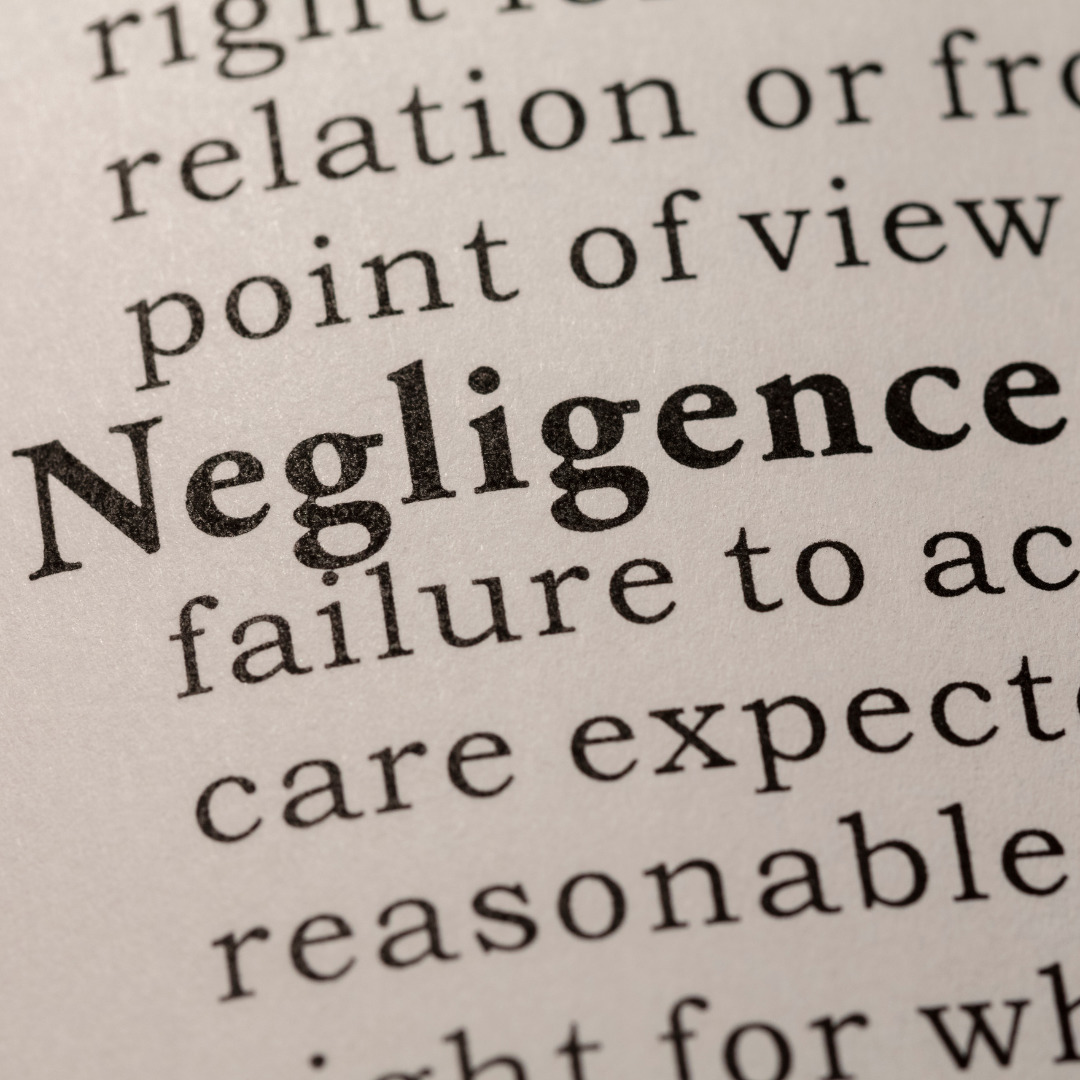You’ve heard the word “negligence” and have been told that one person or another, one company or another, acted “negligently.” What does that mean? If you think it means the person or company made a mistake and someone suffered as a result, you’re only half right.
Negligence is a legal theory in which victims seek damages for the harm they suffered caused by someone else’s conduct. The laws vary from state to state, but generally, to be successful the plaintiff (the party filing the lawsuit) must prove,
- The defendant (the party being sued) owed the plaintiff a legal duty (usually to act with reasonable care given the circumstances).
- The defendant breached that duty by doing something, or failing to do something, and not acting with reasonable care.
- The breach substantially contributed to the cause of the plaintiff’s injuries.
- The plaintiff suffered damages as a result of the breach.
Let’s examine this from the familiar circumstance of an automobile accident. If you are in your vehicle crossing an intersection with a green light and you are struck by a vehicle driven by a driver who is speeding and went through a red light, the other driver is clearly negligent.
- The other driver owed you a legal duty to drive reasonably, obey the laws, and operate his motor vehicle safely.
- The other driver breached the duty when he didn’t obey the stop light and drove faster than the speed limit.
- The unsafe driving was the factual and legal cause of your accident because it was a substantial contributing factor if not the sole cause.
- Because of the other driver’s negligence, you may recover money for property damage as well as for pain and suffering for injuries and for expenses incurred as a result of the accident.
In some cases, both parties’ conduct may have contributed to the accident. Can an injured party who made mistakes have a successful legal claim?
Comparative Negligence
Pennsylvania and New Jersey law include the rule of comparative negligence. A jury may consider the circumstances of the accident and decide the percentage of fault each driver should bear. As long as the plaintiff is no more than fifty percent (50%) at fault for the accident, the jury can award a verdict in the plaintiff’s favor. However, the total damages award will be reduced by the plaintiff’s degree of fault.
If you have been injured because of the negligence of another, call Scott Fegley at the Fegley Law Firm, (215) 493-8287, send us an email at scott@fegleylaw.com or fill out our contact form. Mr. Fegley has over 30 years of person injury litigation experience.
We Give You Peace of Mind.

